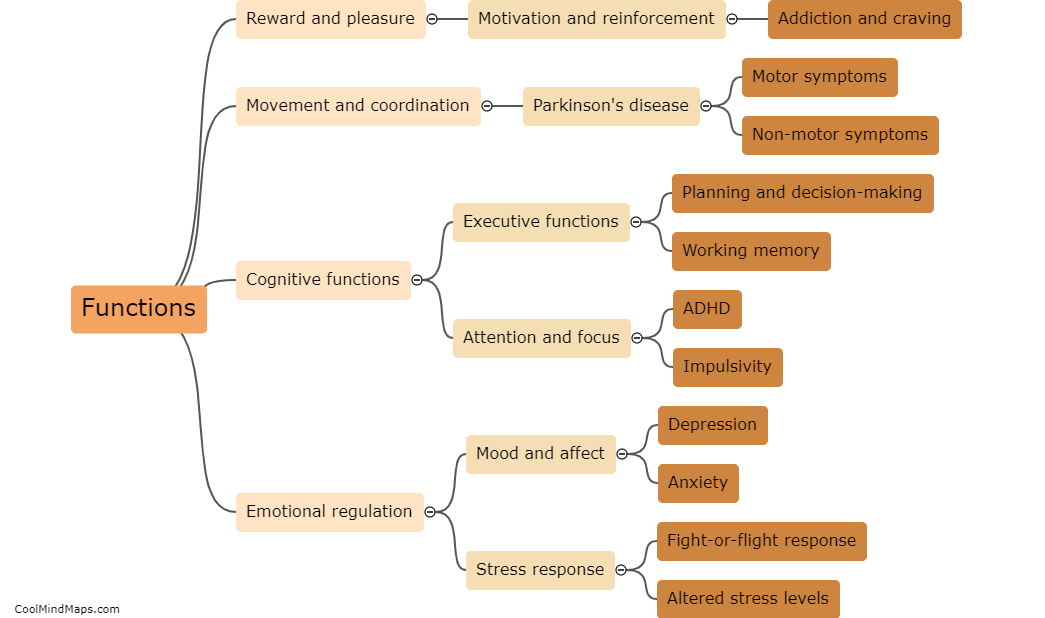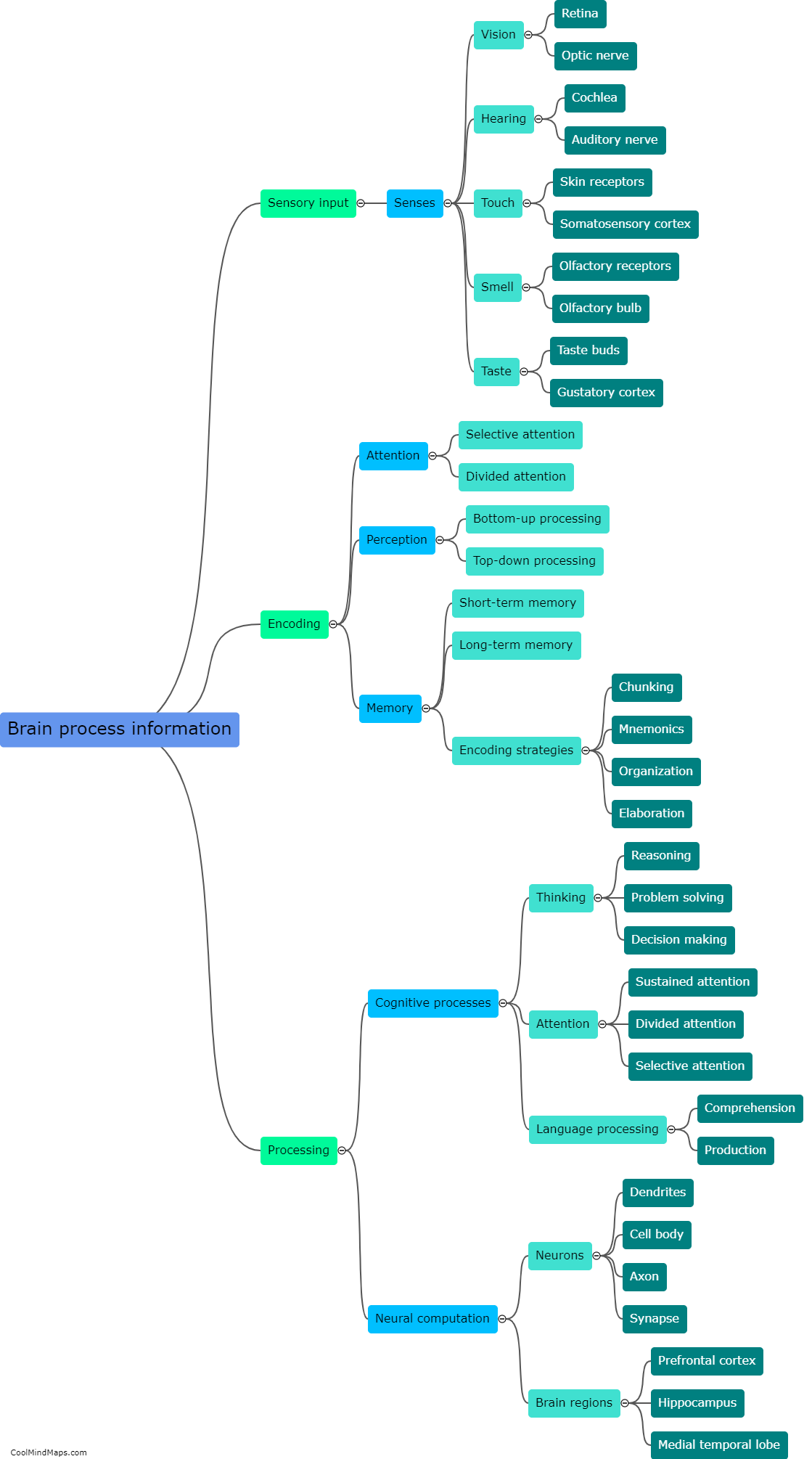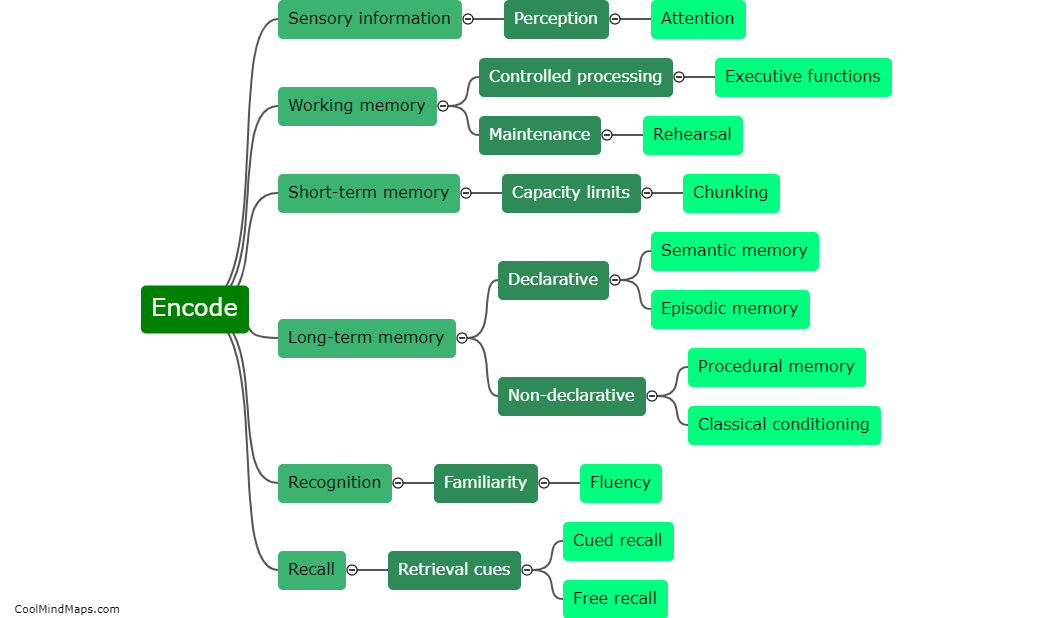How do neural pathways in the primary olfactory cortex contribute to odor perception?
The neural pathways in the primary olfactory cortex play a crucial role in odor perception by facilitating the transmission and processing of olfactory information. When we encounter an odor, the olfactory sensory neurons in our nasal cavity detect the chemical compounds and send signals to the olfactory bulb. From there, the signals are transmitted to the primary olfactory cortex, where the neural pathways are responsible for further processing and integration of the olfactory information. Different odor molecules activate specific receptors, leading to the activation of specific neural pathways in the primary olfactory cortex. These pathways help to encode and decipher the distinct qualities, intensity, and emotional significance of the odors, which ultimately contribute to our perception and recognition of different smells.

This mind map was published on 20 October 2023 and has been viewed 96 times.











